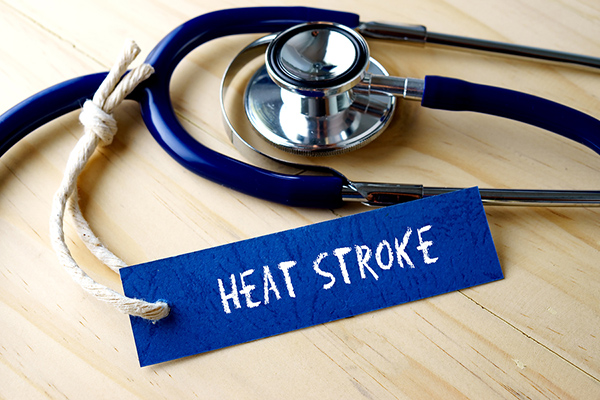 Heat stress is a general term for when the body starts to suffer from heat exhaustion and the body’s core temperature overheats above the optimal range of 36.1 – 38.8 degrees.
Heat stress is a general term for when the body starts to suffer from heat exhaustion and the body’s core temperature overheats above the optimal range of 36.1 – 38.8 degrees.
The far more dangerous heatstroke is a potentially deadly condition that is diagnosed by a high core body temperature greater than 41 degrees. It requires emergency medical treatment.
Depending on the severity and duration of heat stroke, the consequences can be severe and may include permanent organ damage or even death.
It is therefore critical that workers and management in heat stress-prone blue collar industries are trained in recognising the symptoms of heat illness so they can prevent mild heat stress becoming heat stroke and where necessary implement appropriate first aid treatment or other preventative measures. Implementing a heat stress management plan is critical.
Common heat-related illness symptoms are outlined below:
Heat Exhaustion Symptoms
- Normal – elevated core body temperature
- Dehydration
- Profuse Sweating
- Light headedness
- Nausea
- Fainting
- Fatigue
- Headache
- Pale skin
- Hyperventilation
- Urge to defecate
- Chills
Heat Stroke Symptoms
- High core body temperature (>41oC)
- Emotional instability
- Drowsiness
- Seizures
- Disorientation
- Irritability
- Dizziness
- Impaired judgement
- Lack of coordination
- Aggression
- Elevated heart rate
- Vomiting
Risk Factors for the development of a heat related illness
- History of heat illness
- Non heat acclimatised
- Low fitness
- Obese / Overweight
- Feeling unwell
- Lack of heat education
- Limited history of working in the heat
- Dehydration
- Certain medications
- Limited access to cooling
- Limited access to fluids
- High levels of PPE
- Highly motivated
- Lack of scheduled breaks
- Short staffed
Heat Stroke First Aid:
In the event of someone suffering from heatstroke, every minute their body temperature remains above 41 degrees increases the likelihood of permanent injury or death, according to the Victoria Government’s Better Health Channel.
It is critical that if someone you are with shows heat illness symptoms, medical treatment is immediately provided. If the symptoms are those of heatstroke, urgently call an ambulance on triple zero (000).
While waiting for help, the patient should be taken to a cool, shady area to lie down. If they are unconscious they should be placed on their side and their airway cleared.
Excess clothing should be removed and their skin wet and fanned continuously to encourage evaporative cooling. Do not give the person fluids to drink.
Heat Stress First Aid:
As with heat stroke, the patient should be moved into a cool area and excess clothing removed. Evaporative cooling with air flow onto wet skin should also be encouraged along with a few hours of rest before returning to physical activity.
Fluid intake should increase, especially in the event of profuse sweating in which case an electrolyte drink is also important to replace the lost sodium, or the potentially deadly condition of hyponatremia can result.
Cold fluids may help reduce core body temperature however crushed ice ingestion has been proven to reduce the core temperature by acting as a heat sink on the body.
While treatment is critical, prevention is better. For detailed insight into how to prevent and manage bodily heat buildup, download THORZT’s Heat Stress White Paper.